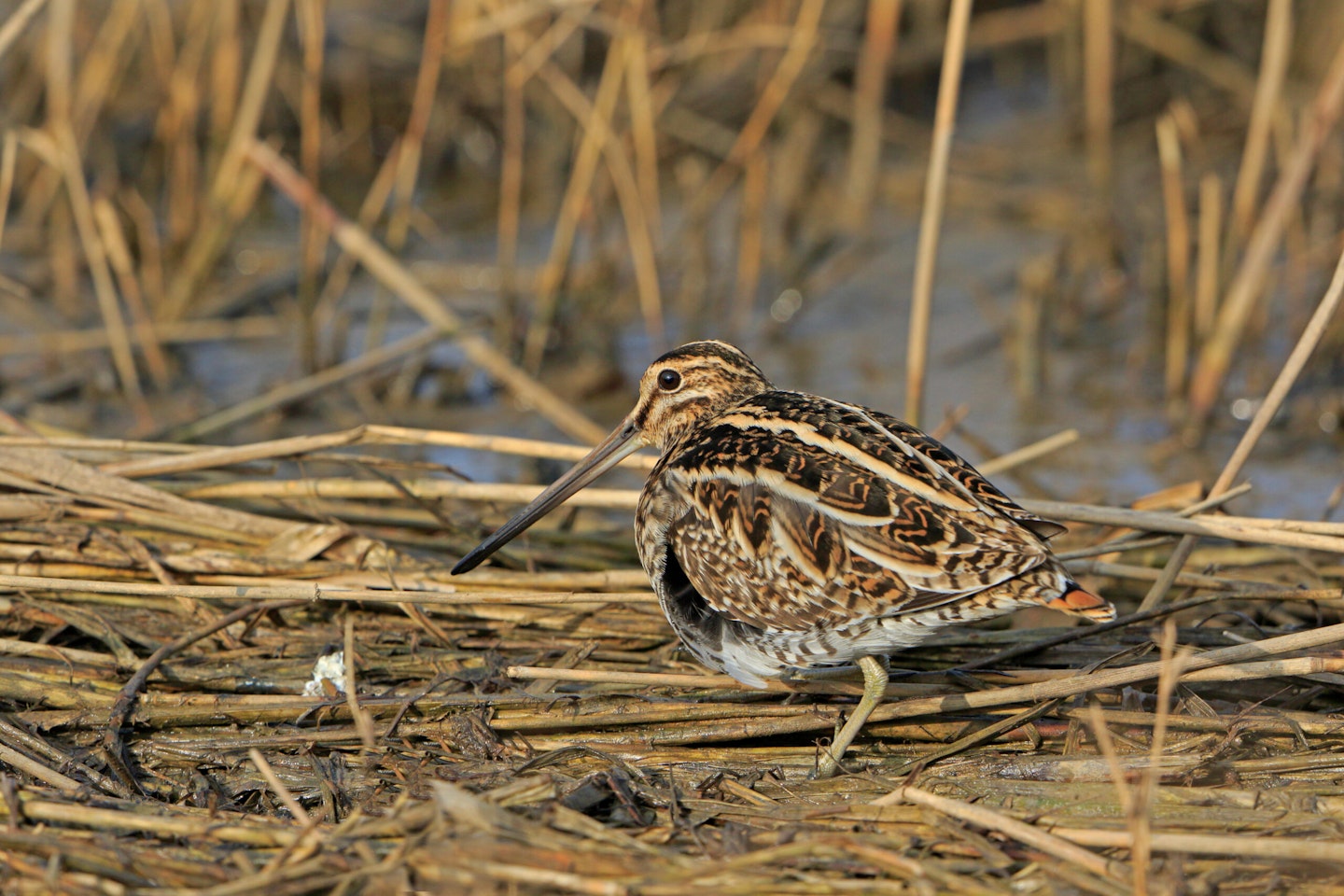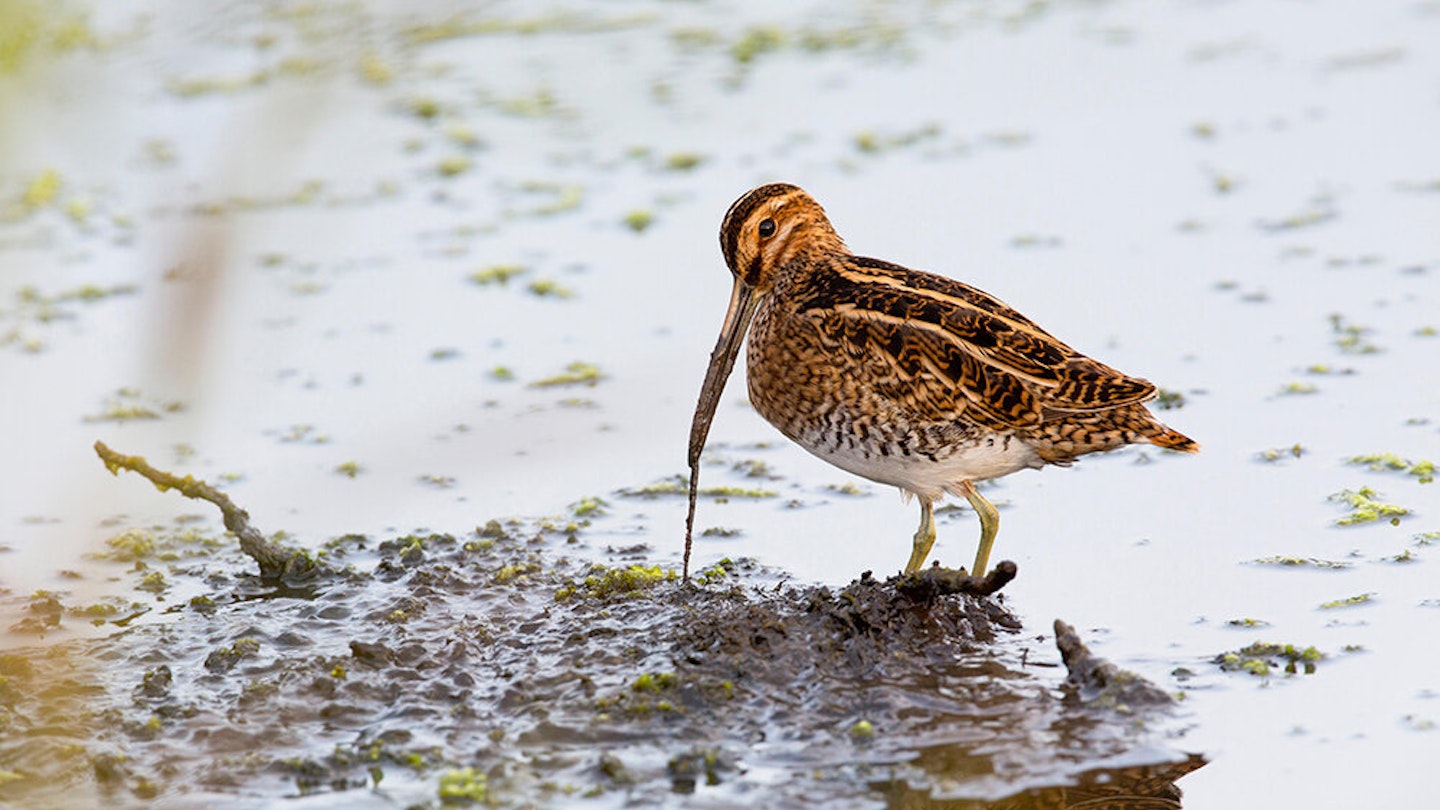SNIPE

Absurdly long-billed, the stripy Snipe is a bird of damp fields and marshy ground, where it probes deep with a sewing machine action. A shy bird, easily flushed, the Snipe flies zig-zagging off with a squelching, sneezing ‘voiceless’ call, only coming down some distance away. In the breeding birds, males display by flying around and falling with spread outer tail feathers, resonating to produce a curious bleating called ‘drumming’. They also have an ‘unoiled wheel’ repeated squeak call.
JACK SNIPE

The little cousin of the Snipe, the Jack Snipe is usually a very difficult bird to see on the deck, preferring to remain concealed among beds of rushes on damp, marshy ground and only flushing when you are just about to step on it. It rises (usually silently) with what appears a struggle, looking like a tiny Woodcock, and only flies a short distance before returning back down. If seen on the ground, notice the constant up and down bobbing. In flight it is obvious that the bill is much shorter than that of the Snipe.
WOODCOCK
.jpeg?auto=format&w=1440&q=80)
Essentially a nocturnal woodland bird, the Woodcock is usually only seen in the daytime when accidentally flushed. It then looks heavy like a pigeon, rather than skinny like a Snipe (albeit a pigeon with a very long bill). It has a rich chestnut tone and when seen well is actually delightfully cryptically pattered. In summer, males perform a song flight called roding, where they patrol around the open woodland breeding habitat alternating deep croaks with very high squeaks.
All images - Alamy
Early December’s edition features the Nuthatch and Treecreeper. Out on December 1st, 2020
